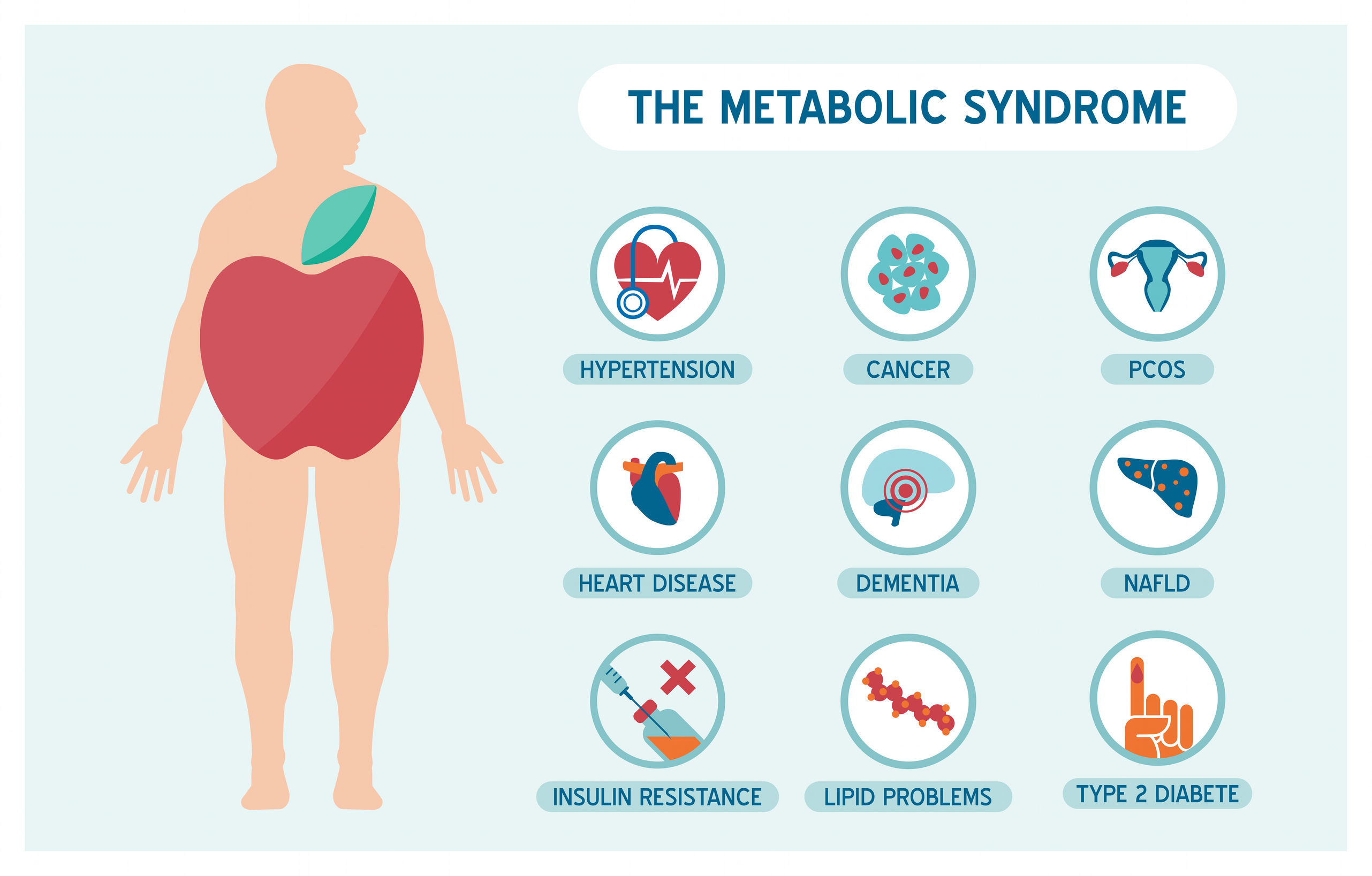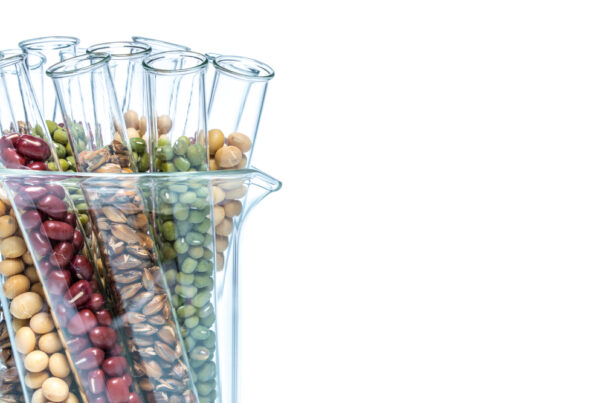Metabolic Syndrome from a Fat Dysregulation perspective
Metabolic Syndrome is a huge problem and arguably associated with more than 50% of all modern day diseases today.
Unfortunately, fats are still made out to be the ‘bad guys’ by mainstream medicine who use outdated and poorly done studies to form their treatment plans. An outdated food pyramid is used to help people loose weight (look how well THAT is working for us…right?) and worst of all, early signs of metabolic syndrome are ignored because ‘your blood glucose levels are fine’.
I’ve got news for you people. By the time your blood glucose starts to increase, and your doctor starts to talk metformin, your metabolic syndrome/diabetes diagnosis is already 20 years in the making. Like with most diseases, we only catch on that ‘there’s a party going on when most of the guests are already passed out drunk on the floor.’
Ivor Cummins did a great talk on metabolic syndrome and its root cause that is easily understandable. I wrote an article on metabolic syndrome and fatty liver a while back, but liked Ivor’s take on it so much that I decided to write another more simplified version based on his thoughts.
You can watch the video below or read the summary.
It all starts with insulin and dysregulation of adipocyte or fat cell communication…
INSULIN IS THE MASTER CONTROLLER
Insulin has the job of telling glucose where to go, but it is so much more than that!
It works very closely with leptin. As insulin allows glucose to enter fat cells or adipocytes it triggers lipogenesis (the formation of more fat cells) which creates signalling molecules called lipokines which cross-talk to the liver to keep everything in balance.
When you eat highly digestible carbohydrates such as sugar, grains or starches, the small intestine release incretins such as Glucose Dependant Insulinotropic hormone which triggers an insulin release. If you eat a lot of these foods then the insulin release becomes a lot bigger, and over time your adipose or fat tissue become insulin resistant, because many of the gut hormones have receptors on the adipose tissue and pancreatic cells. As fat cells become insulin resistant, less lipokines are produced and the communication or signalling process between the fat cells and liver become compromised.
Yep, instead of having a meeting everyday and keeping each other up to speed on the daily program, they start to call each other only every other day. And we all know what happens when the lines of communication starts to break down.
Things start to go wrong.
The liver becomes slightly insulin resistant.
WHAT ABOUT FRUCTOSE?
Now let’s put fructose into the picture, because let’s face it. Fructose has become a bigger issue than glucose these days with HFCS (High Fructose Corn Syrup) making its way onto many food labels as a ‘natural sugar’.
Fructose can only be processed by the liver since the liver is the only organ in the body that contains the GLUT receptor needed for fructose absorption.
Between fructose and glucose, the liver is “drowning” a bit in all this sugar.
So what does the liver do with it?
Turns it into cholesterol and ships it out into the bloodstream in the form of VLDL (the bad cholesterol).
But not just that, your liver becomes even more insulin resistant.
NOW COMES ALL THE OTHER CONTRIBUTORS
- Lack of sleep or disturbed circadian rhythms
- Stress
- Lack of exercise
- Oxidative stress
- High Omega 6 to low omega 3
- Nutritional deficiencies
Add these things into the mix and you eventually develop Insulin Resistance (IR) of the skeletal muscle cells as well. This will affect how well glucose is taken up by the muscle cells and lower the amount of glucose able to get into the mitochondria and TCA cycle to be turned into ATP.
So what do you think happens when glucose can’t get into the cell?
That’s right. Blood glucose increase even more, which triggers more insulin to be released, and more insulin resistance. A vicious circle that feeds on itself.
INFLAMMATION OF THE FAT CELLS
As you may remember all of this started with Insulin Resistance (IR) of the adipocytes (fat cells). So let’s go full circle back to the fat tissue.
As the Insulin Resistance (IR) worsens, more and more glucose is taken up into the fat cells until they become engorged and inflamed which triggers the immune system to recruit macrophages to deal with this inflammation.
Now here is something interesting.
Did you know that by the time you get to the late stages of metabolic syndrome that half of your visceral fat mass can consist of macrophages (immune cells)?
That’s pretty impressive.
But guess what?
You can still have ‘normal blood glucose’ levels.
So do you think you should be relying on numbers on a piece of paper to tell you whether you are in trouble or not?
Sometimes it’s common sense people.
THE FINAL STRETCH…
So, you are almost at your diagnosis.
What happens now is that the pancreas and liver becomes congested with ectopic fat which puts a huge strain on the pancreatic beta cells. Eventually they will run out of steam and give up. Pancreatic beta cells will go into a CDR (Cell Danger Response) where they will either die or hibernate.
Either way, insulin production will come to a halt.
In a system that is hugely insulin dependent and regulated, this is a disaster.
No insulin means no more restraints on the fat cells. Lipolysis kicks in (the break down of fats into free fatty acids or FFA’s) and FFA’s are released into the bloodstream.
Where do you think FFA’s go? Yes, the poor liver.
As if it doesn’t have enough to do already, it gets all these FFA’s and glycerol and needs to do something with it. And all that is left for it to do is to turn it into glucose and send it right back out into the bloodstream. Your blood sugar levels rise dramatically, and guess what…
You FINALLY get your metabolic syndrome/diabetes diagnosis.
THE SOLUTION…INSULIN. REALLY??
Now you are put on insulin, because you finally got your diagnosis.
But the system is already broken.
Communication lines are long closed.
You put exogenous insulin into the mix, what is going to happen? You may have to use a larger amount than is physiologically produced in healthy people because you are already insulin resistant. To force a system to do what you want you have to use more. Initially this will force glucose into the cells in order to get blood levels lower because this is what gives you the blood test results that makes your doctor happy.
Seeing a lower blood glucose reading.
But I’m sorry to say, your cells are in disagreement. Because now the cells have to deal with the problem.
It’s almost like we keep sweeping the dirt under the rug instead of dealing with the problem head on. Eventually this stuff catches up with you.
The cells become flooded with glucose which will upregulate glyconeogenesis and shove it into glycogen stores (until this is full), then upregulate glycolysis to produce lactic acid (which makes you feel horrible and tired and makes your muscles ache), then turn it into cholesterol via acetyl-CoA (because the mitochondria refuses to take any more passengers on board) which gives you a nice high cholesterol reading on your next blood test.
- Blood test = lower blood sugar (Doctor is happy. Diabetic medication is working.) But…
- Blood test = higher cholesterol (Doctor is concerned. Wants to put you onto statins.)
And this my friends is how your drug roller coaster starts that you will NEVER get off if you do not address the root cause issues of metabolic syndrome, which invariably will start with diet, but will also include many other factors as well.





